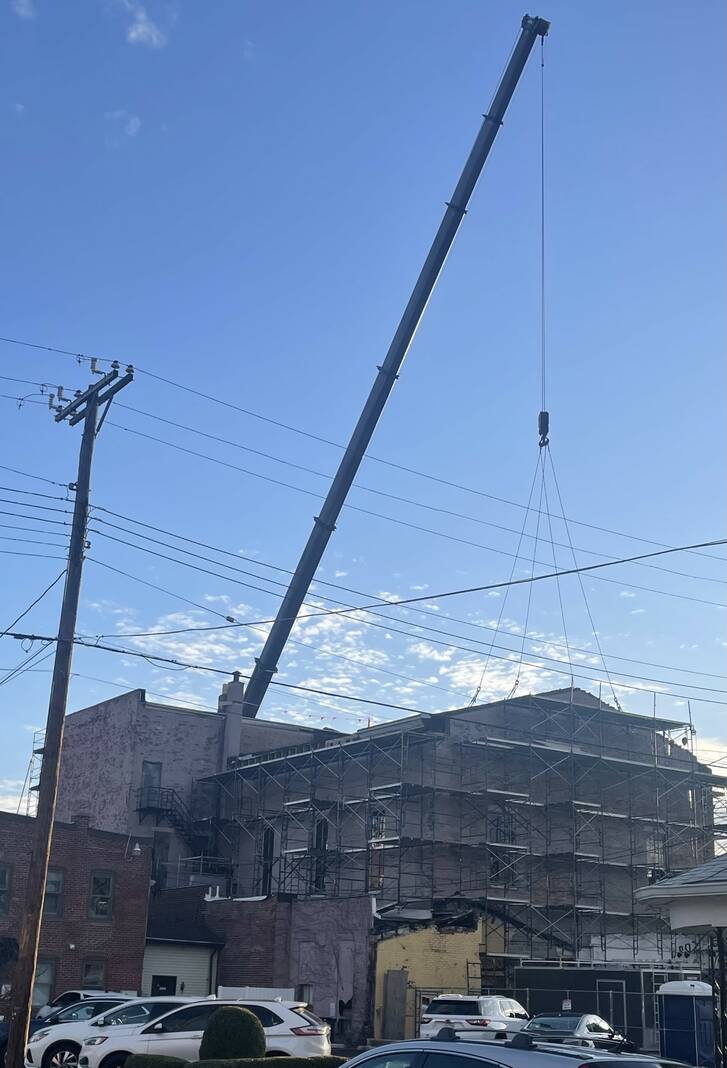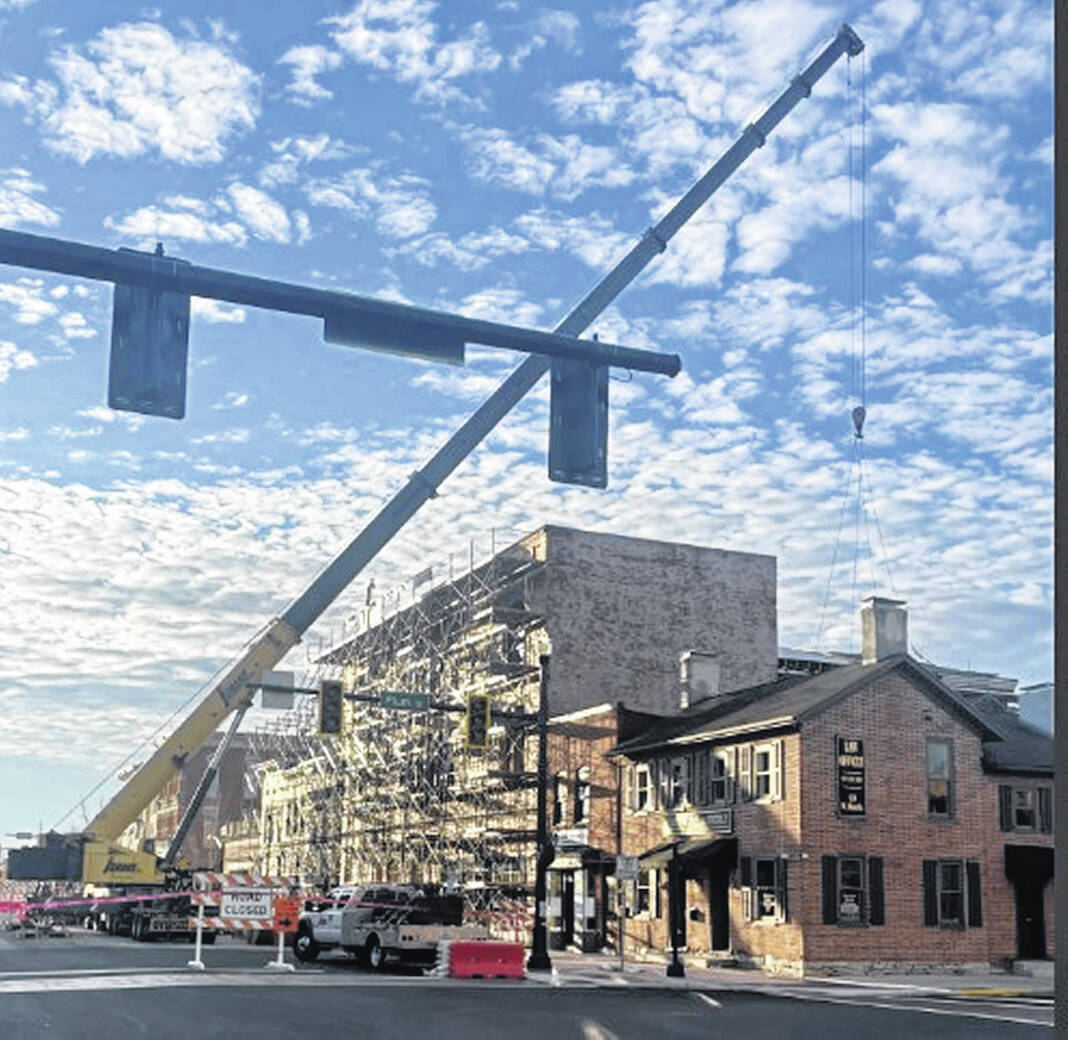

TROY — In an on-going effort to keep downtown Troy businesses, residents and visitors informed as to the latest status of the West Main Street closure, the city of Troy is providing periodic updates until the Cherry Street to Plum Street block is opened back up to vehicles and pedestrians.
The following is the current statement sent in a press release from the city of Troy, as of Thursday, March 21:
The city is encouraged by the work on the IOOF Building (formerly known as the Tavern Building) that has been on-going since February. There is not, nor will there be any intent to impede the progress of its stabilization. The city will continue to be supportive of all efforts to stabilize the IOOF Building under the terms of the settlement agreement mediated by Miami Common Pleas Court Judge Stacy Wall, filed on Dec. 26, 2023 (agreement). A copy of that Agreement can be found at www.troyohio.gov/DocumentCenter/View/7695/Tavern Settlement-Agreement.
It has been 271 days (38 weeks and five days) since West Main Street, between Plum and Cherry Streets, was closed due to the grave concerns of collapse of the Tavern Building (aka IOOF/Old Historic Courthouse Building, or IOOF Building). The closure was due to the Miami County chief building official’s (CBO) adjudication order and affidavit of compliance, as well as the CBO’s and Troy Fire chief’s certification.
There have been questions raised about the city’s authority regarding the building permits that have been issued by Miami County building regulations. It is very important to note that on Nov. 16, 1999, (nearly 25 years ago), the city of Troy and Miami County Commissioners signed a contract wherein the city granted to the county “full authority to do all things necessary to exercise all enforcement authority, accept and approve plans and specifications and make inspections necessary within the city in accordance with the provisions of the Ohio Basic Building Code pursuant to rule 4101:2-51 of the [Ohio] Administrative Code.” The city does not employ a certified building official and city officials have not, cannot, and will not attempt to override the decisions of the county building employees named in the agreement, specifically Plans Examiner Chris Pettis and Miami County Acting Chief Building Official Shawn Winn.
Some questions that have been asked:
• Is the city only interested in demolishing the building, especially the 1841 (historic courthouse) portion, and not seeing the IOOF Building stabilized for reuse? No, the city’s only concerns are that the Miami County Building demolition order is lifted by the agreement deadline of April 30, 2024, the roadblock on West Main Street is removed, and the property is redeveloped as soon as possible. The agreement has several deadlines that were included to guarantee the street is opened as soon as possible. One of the important deadlines was March 1, when certain benchmarks had to be achieved. There is a difference of opinion on what those benchmarks were, so the city asked the judge to provide an opinion. As of this date, Judge Stacy Wall has not done so. The city is not demanding demolition of the 1841 Building and will not file a formal action regarding this difference of opinion.
• Why was a scaffolding permit with engineered drawings required before the repairs to the front wall of the IOOF Building could begin? Miami County has been the city’s building department since 1999 and makes all decisions regarding any building permits, or conditions placed thereon. The city has consulted frequently with the Miami County chief building official on complex and important projects such as the IOOF Building stabilization. We do so to understand what laws require certain conditions, as well as to mediate any concerns by contractors, project managers, and property owners. Regarding scaffolding, Ohio Basic Building Code Chapter 3103 requires a permit and construction documents for the installation of large structures. The Miami County Chief Building Official required a permit because the IOOF Building scaffolding is larger than 120-square-feet that could support 10 or more persons. This requirement is not unprecedented. In fact, the previous owner of the IOOF Building was required to submit a permit application with engineered drawings in 2022.
• Why is a load test being required as an additional item on the “repair or replace” list (exhibit B of the agreement)? Can Chief Building Official Shawn Winn add such a requirement even after the plans examiner approved the building permits? Winn determined that a load test is needed to comply with chapter 3405.2.1 of the Ohio Basic Building Code. The Agreement includes language in section III(B)(3)(A) that specifically allows Winn to “add items to the repair or replace portions of the list if he determines that such items are required to stabilize the building and lift adjudication order No. 36 (emphasis added).”
Furthermore, in section III(B)(3)(D) of the agreement, Winn must approve the building permits if the plans examiner approves them “unless approval is contrary to law.” The city was adamant that Winn have the final approval as a certified building official and, as importantly, in case the plans examiner (who is not a building official or structural engineer) misses a legal requirement.
It is important to repeat that there is not, nor will there be any intent to impede the progress of the IOOF Building’s stabilization efforts. The city will continue to be supportive of all efforts to stabilize the IOOF Building under the terms of the settlement agreement.
The city of Troy will provide further Q&A updates as we continue to monitor any progress with the IOOF Building project. Please contact the city of Troy at 937-335-1725 or visit its social media and website with any questions or concerns.


